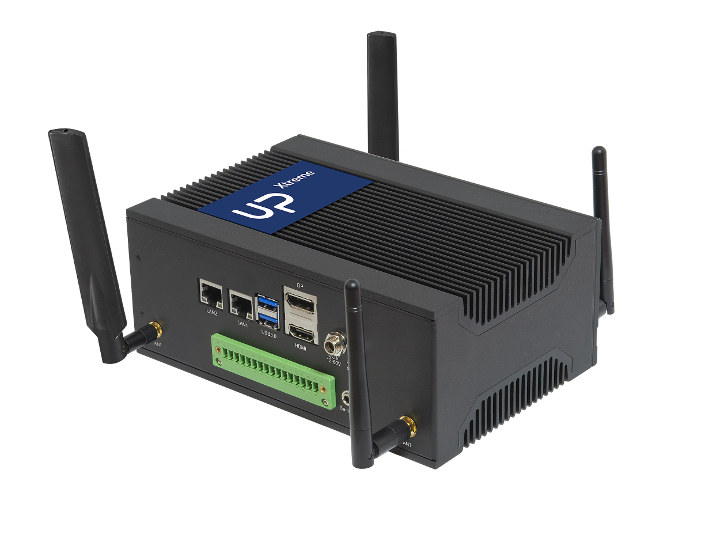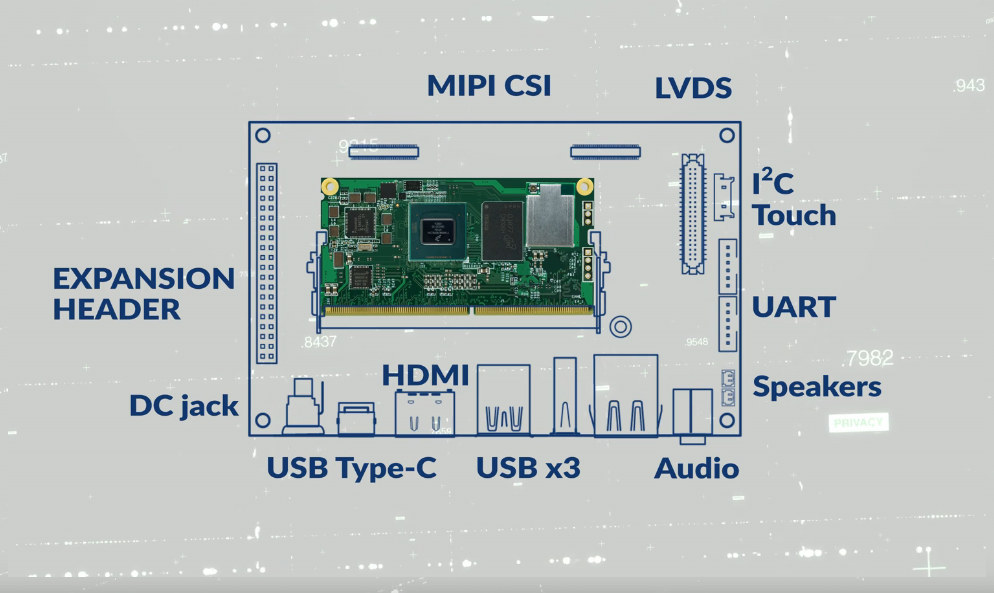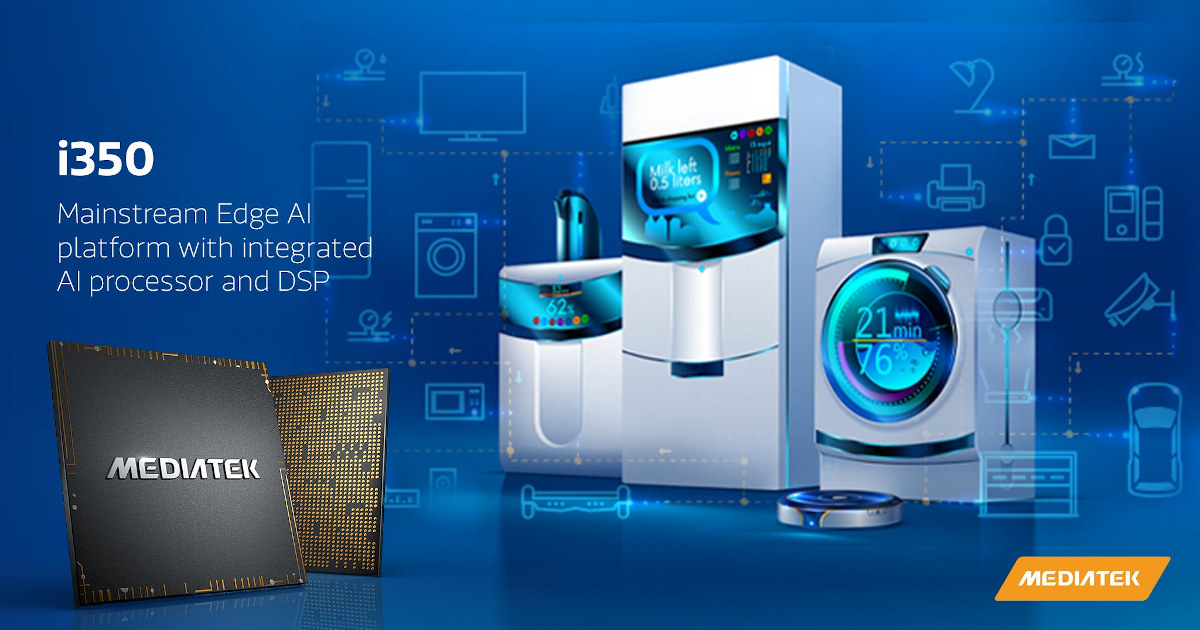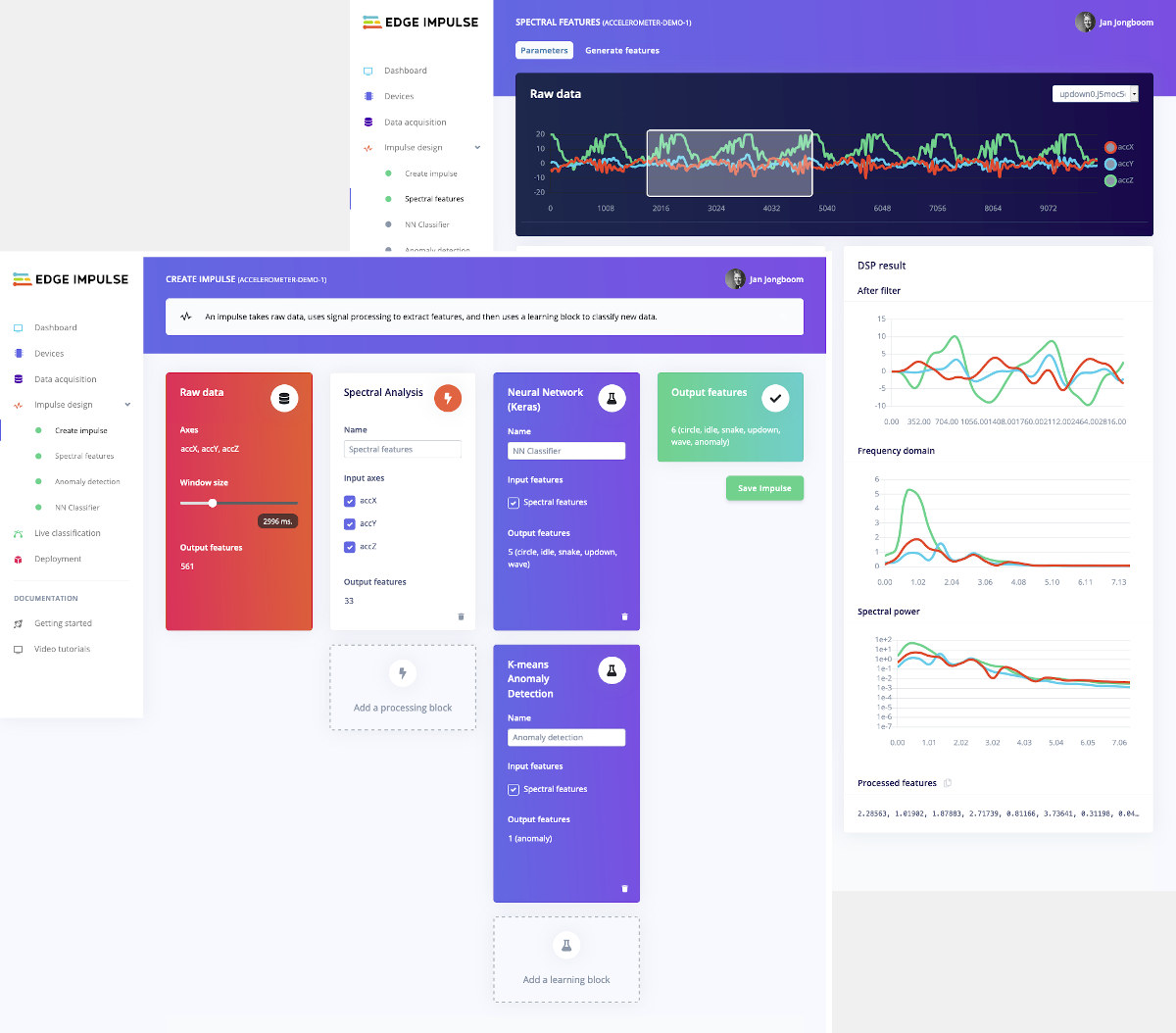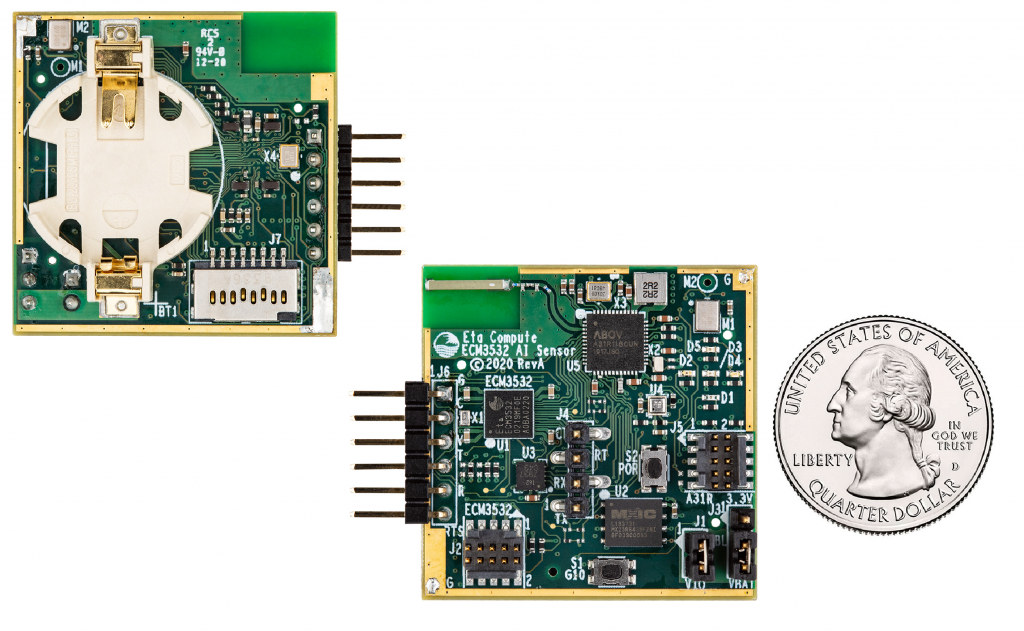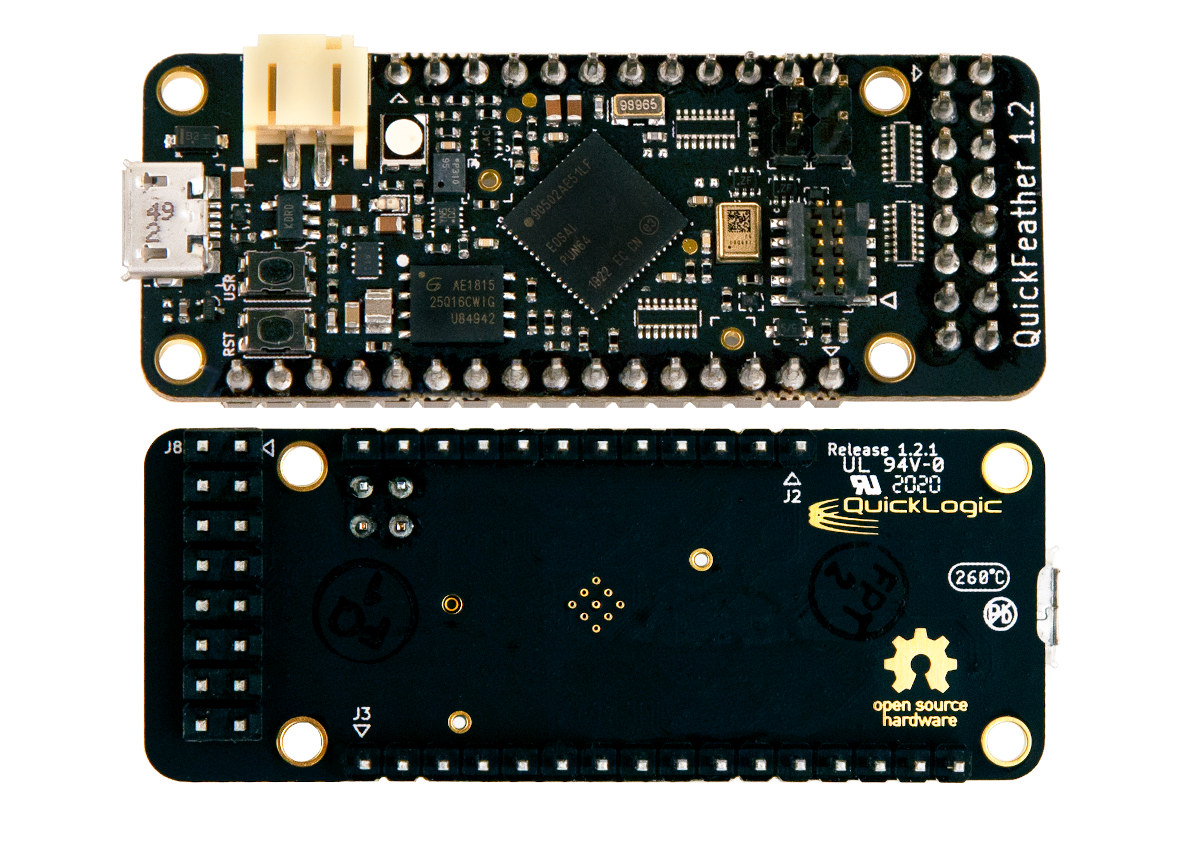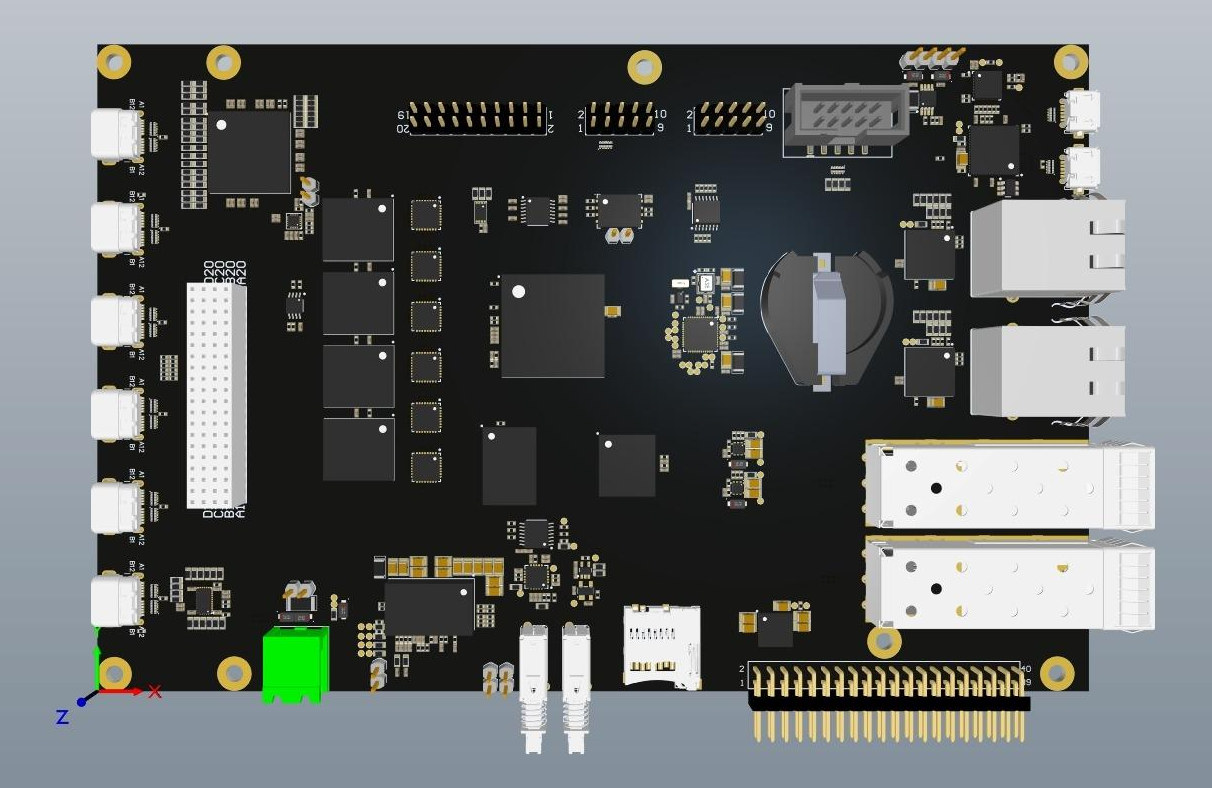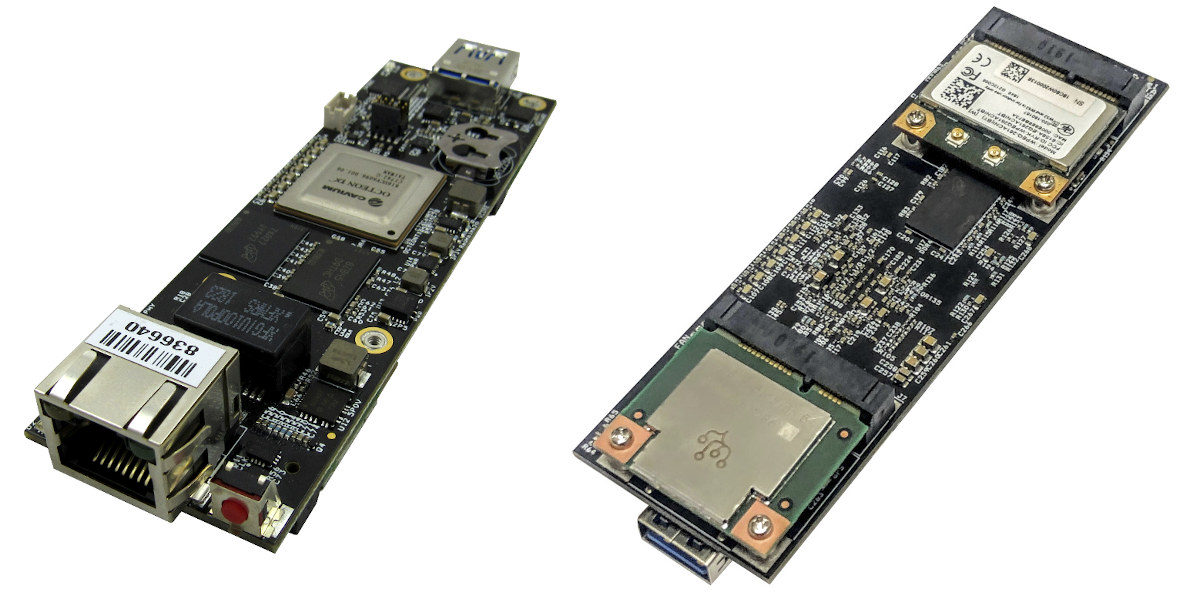AAEON UP Xtreme Edge (UPX-Edge) is a rugged embedded computer built around the company’s UP Xtreme SBC with a choice of 15W Whiskey Lake-U processors ranging from Celeron 4305UE to Core i7-8665UE, and optional Intel Movidius X AI accelerator cards. We previously noted the company had launched UP Xtreme Smart Surveillance kit integrating Milestone video management software (VMS) and SAIMOS video analytics software to the embedded computer. AAEON has now partnered with another company – AOTU.AI – to announce the launch of the BrainFrame Edge AI Developers Kit (DevKit) aiming to help developers and system integrators to rapidly create and deploy Smart Vision applications. The solution relies on UP Xtreme Edge mini PC fitted with an Intel Core i5-8365UE processor and 16GB RAM, 64GB eMMC flash, and two Intel Movidius Myriad X VPUs. We’ve also gone through Up Xtreme Edge specifications, so let’s instead focus on the software. This is […]
Wandboard 8MPLUS SBC Gets NXP i.MX 8M Plus SoC with 2.3TOPS NPU
TechNexion Wandboard Dual was one of the first Freescale i.MX 6 single board computers when it launched in early 2013 and the company has introduced a few more models over the years including Wandboard QuadPlus in 2017. TechNexion is now working on a new version called Wandboard 8MPLUS powered by the recently announced NXP i.MX 8M Plus SoC that features a built-in 2.3 TOPS NPU for AI acceleration. Wandboard 8MPLUS preliminary specifications: EDM System-on-Module SoC – NXP i.MX8M Plus quad-core Arm Cortex-A53 processor @ up to 1.8 GHz, Arm Cortex-M7 real-time core @ up to 800 MHz, Vivante GC7000UL 3D GPU, Vivante GC520L 2D GPU, HiFi 4 audio DSP, and 2.3 TOPS Neural Processing Unit (NPU) System Memory – 2GB or 4GB LPDDR4 Storage – 32GB eMMC flash Video Decode – HD (1080p +720p) Video Encode – 1080p60 H.265, H.264 260-pin EDM Type G board-to-board connector Debugging – JTAG Interface […]
MediaTek i350 Edge AI Processor is Designed for Mainstream AIoT & Smart Home Applications
MediaTek is well known for its mobile processors, but recently the company also manufactures IoT and AI processors such as MediaTek i300/i500 and MediaTek i700. The company has now introduced an updated to the entry-level MediaTek i300 processor with MediaTek i350 quad-core Cortex-A53 processor integrated with DSP and AI processor for vision and voice edge processing applications including facial, object, gesture, motion recognition, license plate recognition (LPR), voice activation and speed recognition, sound isolation, bio-tech and biometric measurements, and more. MediaTek i350 key features and specifications: Processor – 4x Arm Cortex-A53 cores up to 2.0 GHz with 512KB unified L2 cache, Arm NEON GPU – Arm Mali-G52 MC1 up to 800Mhz with support for OpenGL ES, OpenCL, and Vulkan APIs Co-processor – MediaTek APU 1.0 AI Processor up to 500MHz (285 GMACs) Memory -LPDDR4/LPDDR4X up to 3200Mbps, LPDDR3, DDR3/L up to 1866Mbps Storage – eMMC 5.1 flash (SLC/MLC/TLC) Display Interfaces […]
Edge Impulse Enables Machine Learning on Cortex-M Embedded Devices
Artificial intelligence used to happen almost exclusively in the cloud, but this introduces delays (latency) for the users and higher costs for the provider, so it’s now very common to have on-device AI on mobile phones or other systems powered by application processors. But recently there’s been a push to bring machine learning capabilities to even lower-end embedded systems powered by microcontrollers, as we’ve seen with GAP8 RISC-V IoT processor or Arm Cortex-M55 core and the Ethos-U55 micro NPU for Cortex-M microcontrollers, as well as Tensorflow Lite. Edge Impulse is another solution that aims to ease deployment of machine learning applications on Cortex-M embedded devices (aka Embedded ML or TinyML) by collecting real-world sensor data, training ML models on this data in the cloud, and then deploying the model back to the embedded device. The company collaborated with Arduino and announced support for the Arduino Nano 33 BLE Sense and […]
ECM3532 AI Sensor Board Features Cortex-M3 MCU & 16-bit DSP “TENSAI” SoC for TinyML Applications
Eta Compute ECM3532 is a system-on-chip (SoC) with a Cortex-M3 microcontroller clocked at up to 100 Mhz, and NXP CoolFlux 16-bit DSP designed for machine learning on embedded devices, aka TinyML, and part of the company’s TENSAI platform. The chip is also integrated into the ECM3532 AI sensor board featuring two MEMS microphones, a pressure & temperature sensor, and a 6-axis motion sensor (accel/gyro) all powered by a CR2032 coin-cell battery. ECM3532 AI sensor board specifications: SoC – ECM3532 neural sensor processor with Arm Cortex-M3 core @ up to 100 MHz (< 5μA/MHz run mode) combines with 512KB embedded FLASH, 256KB SRAM, and 8KB BootROM + secure bootloader, and NXP CoolFlux 16-bit DSP @ up to 100 MHz with 32KB program memory, 64KB data memory. See the product brief for details. Storage – 64Mbit serial Flash for datalogging Connectivity – Bluetooth 4.2 LE via ABOV Semiconductor A31R118 and PCB antenna […]
QuickFeather Board is Powered by QuickLogic EOS S3 Cortex-M4F MCU with embedded FPGA (Crowdfunding)
Yesterday, I wrote about what I felt what a pretty unique board: Evo M51 board following Adafruit Feather form factor, and equipped with an Atmel SAMD51 Cortex-M4F MCU and an Intel MAX 10 FPGA. But less than 24 hours later, I’ve come across another Adafruit Feather-sized Cortex-M4F board with FPGA fabric. But instead of using a two-chip solution, QuickLogic QuickFeather board leverages the company’s EOS S3 SoC with a low-power Cortex-M4F core and embedded FPGA fabric. QuickFeather board QuickFeather specifications: SoC – QuickLogic EOS S3 with Arm Cortex-M4F Microcontroller @ up to 80 MHz and 512 Kb SRAM, plus an embedded FPGA (eFPGA) with 2400 effective logic cells and 64Kb RAM Storage – 16Mbit SPI NOR flash USB – Micro USB port with data signals tied to eFPGA programmable logic Sensors – Accelerometer, pressure sensor, built-in PDM microphone Expansion I/Os – Breadboard-compatible 0.1″ (2.54 mm) pitch headers including 20 Feather-defined […]
Upcoming SAVVY-V Open Source RISC-V Cluster Board Supports 10GbE via Microsemi PolarFire 64-bit RISC-V SoC
RISC-V based PolarFire SoC FPGA by Microsemi may be coming up in the third quarter of this year, but Ali Uzel has been sharing a few details about SAVVY-V advanced open-source RISC-V cluster board made by FOSOH-V (Flexible Open SOurce Hardware for RISC-V) community of developers. It’s powered by Microsemi Polarfire RISC-V SoC MPFS250T with four 64-bit RISC-V cores, a smaller RV64IMAC monitor core, and FPGA fabric that allows 10GbE via SFP+ cages, and exposes six USB Type-C ports. The solution is called a cluster board since up to six SAVVY-V boards can be stacked via a PC/104+ connector and interfaced via the USB-C ports. SAVVY-V cluster board preliminary features and specifications: SoC – Microsemi Polarfire RISC-V SoC MPFS250T with a quad-core 64-bit RV64IMAFDC (RV64GC) processor @ up to 667 MHz, a RV64IMAC monitor core, and FPGA fabric with 250K logic elements; 3.0 CoreMarks/MHz, 2.0 DMIPs/MHz; Also compatible with MPFS160T, […]
Using Google Coral mPCIe Card into a Compact Marvell Octeon TX Linux SBC
Google launched Coral mPCIe and M.2 cards at the very beginning of the year. The cards integrate the company’s 4 TOPS Edge TPU used for low power edge AI applications to bring the solutions to boards with mPCIe or M.2 sockets. Those are just hardware sockets that are optionally connected to USB, PCIe, I2C, etc… so you have to make sure the socket on your board exposes PCIe Gen2 x1. If you worry about compatibility, it’s good to get a board that’s known to work, and one of those is Gateworks Newport GW6903 SBC that offers two mPCIe sockets and features Marvell Octeon TX dual or quad-core Armv8 processor coupled with up to 4GB RAM. Besides the mini PCIe Coral card and Newport SBC, you’ll also need a Linux host and optionally a USB webcam for inference. The rest of the instructions are explained in the Wiki with the following […]


